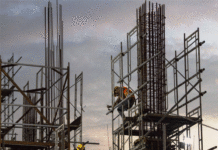By Anuj Puri, Chairman – ANAROCK Property Consultants
New Delhi, July 15, 2018: In any discussion about affordable housing in India today, the fact that a lot of such housing is actually lying vacant is bound to crop up. One may point out that, especially with the Government’s avowed intention of providing Housing for All by 2022, this supply should logically go towards bridging the affordable housing gap.
However, it is obviously not that simple or it would already have happened. A lot of this budget housing inventory is lying vacant for good reasons.
 Before we get into the reason, let’s take a quick look at the numbers. Around 237,000 units across top 7 cities belonging to the affordable housing segment (units priced less than INR 40 lakh) were unsold as of Q2 CY 2018. This number pertains only to the unsold units of organized private developers and does not include Government housing schemes, which essentially means that the number would go further northwards if those are included.
Before we get into the reason, let’s take a quick look at the numbers. Around 237,000 units across top 7 cities belonging to the affordable housing segment (units priced less than INR 40 lakh) were unsold as of Q2 CY 2018. This number pertains only to the unsold units of organized private developers and does not include Government housing schemes, which essentially means that the number would go further northwards if those are included.
Given the unrelenting requirements for urban budget housing, inventory that has been created in the major cities by seasoned organized players who know what they’re doing will eventually get absorbed. But what about projects generated by the unorganized sector – the innumerable smaller buildings, often one-off undertakings by fringe developers in far-flung areas? These contribute the major share of stock which lies idle – and may continue to lie idle – in the post-RERA era. Let’s examine why.
What lies beneath
Broadly speaking, there can be three reasons (or combinations of them) why an affordable housing project with ready-to-move units remains unoccupied. There can obviously be other reasons as well – as Shakespeare so aptly put it, ‘there is many a slip between the cup and the lip’ – but a majority of unsold ready projects fall into any or combinations of these three:
- No infrastructure to make them liveable:
Many barren projects are the result of good, old-fashioned miscalculation – the developers had not undertaken thorough feasibility studies prior to launch. They just went ahead with launching affordable housing in an area because land was cheap and local development regulations were lax. When housing comes up in areas which are simply too far from the city’s workplace hubs and lack the necessary support infrastructure – most importantly transport-specific infrastructure – the results are fairly predictable.
- Inferior construction:
Many such projects have serious flaws in design and construction and were launched before RERA hit the market. RERA also applies retrospectively to under-construction projects and is very strict about factors like construction quality. Overtly inferior construction will not pass the RERA scanner and cannot even be marketed, leave alone sold. Interestingly, due to the bad construction, ready-to-move inventory in badly-constructed projects will also deteriorate more rapidly if it remains unoccupied for a few more years.
- Legal flaws:
RERA is also strict on projects which were launched without all the necessary approvals in place (and also on non-approved floors in otherwise approved projects). This obviously makes homes in them unattractive to buyers, who will shun them in favour of fully-compliant developments. With a huge pileup of unsold and ready-to-move inventory available in most markets, there is no shortage of such options.
Of course, not all legal flaws are created equal – in some cases, non-compliant projects can get RERA clearance if the legal transgressions are minor and permissions can be obtained after a fine is paid or certain structural changes are done. However, projects with major legal flaws will not have this option.
It could be argued that projects with such drawbacks should have found buyers before RERA kicked in – after all, they are invariably very affordably-priced and there have always been unwary buyers who do not look beyond this all-important factor. However, even if consumers don’t do a thorough due diligence, banks most certainly do. Intending buyers would not have been granted home loans if there were serious flaws in the project.
What can be done to make vacant housing marketable?
Its ‘Housing for All by 2022’ commitment obviously puts the Government under pressure to help deploy the necessary saleable stock. It has two primary options within its powers to make this happen:
- The first way would be to rapidly deploy infrastructure in areas which have unsold budget housing. Even if this cannot happen immediately, buyers will still take some comfort from a formally-announced plan to deploy such infrastructure in the foreseeable future. In such cases, many buyers would be willing to buy now and wait till the area becomes more inhabitable.
- The second way would be to announce amnesty schemes to regularize projects with relatively minor deviations (with certain provisos and conditions) and/or were built without the necessary approvals. This is possible and has, in fact, been happening in many cases across the country where the legal breach is not major enough so as to be a total deal-breaker.
If, for instance, the project has been built in an NDZ or environmentally sensitive area, strategic tweaks in the city’s development plan can do the trick. As we have seen in the recent case of Mumbai where the previous NDZ salt pan lands were laid open for development, many non-compliance issues can be addressed by Government policy intervention.
Conclusion:
The selective practice of regularizing illegally-developed buildings has drawn a lot of flak in the past. Under normal circumstances, the Government would obviously not create infrastructure merely rescue players with marooned projects. However, the ‘Housing for All by 2022’ is a veritable Sword of Damocles hanging over the incumbent Government’s head. Desperate times call for desperate measures which need not always have a unilateral buy-in from all stakeholders – as was amply vouchsafed by the implementation of RERA.
At the end of the day, we certainly do want to see a roof over every Indian’s head – if not by 2022, then at least at some point in the foreseeable future. It may be an item on an electoral manifest, but it is there because it is important – very important. Housing for all citizens is an express need for any developing country, and the fundament of a steady and growth-oriented economy.
Corporate Comm India(CCI Newswire)




















